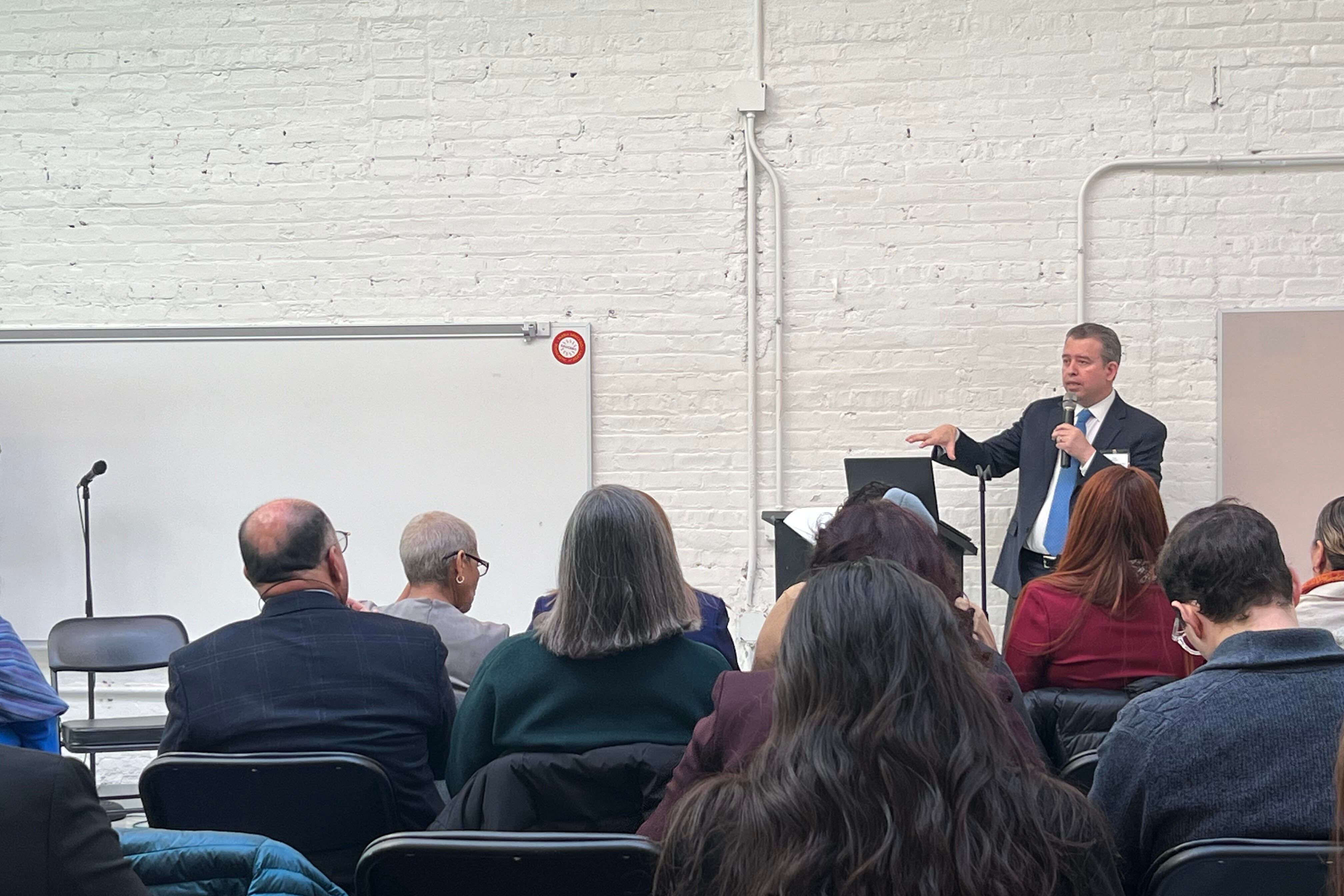Sign up for Chalkbeat Chicago’s free daily newsletter to keep up with the latest education news.
Chicago Public Schools plans to hit “the gas pedal” on an expansion of dual language programs, which teach students in both English and another language, CEO Pedro Martinez said Tuesday at an event focused on Latino students.
At the event hosted by advocacy organization Latino Policy Forum, Martinez said CPS has a “significant opportunity” to expand its existing slate of dual language programs, which are designed to help students become fluent in English and another language.
The district currently has dual language programs in 37 elementary schools, three high schools, and three charter schools, according to a presentation Martinez delivered Tuesday.
Officials did not immediately share details on how soon the district wants to expand its dual language offerings, what it would cost, or where new programs would open because the district is still planning, according to a spokesperson. Martinez said Tuesday his team also wants to create more world language options.
Dual language programs are one of three types of English learner programs available in CPS; however, dual language can also serve students who are not learning English as a new language.
By state law, schools with 20 or more English language learners who speak the same native language must offer a Transitional Bilingual Program, which provides instruction in English and a child’s native language but focuses on building up the student’s English skills. Schools with 19 or fewer students who speak the same native language have a Transitional Program of Instruction, which provides instruction in English, according to CPS.
Transitional programs work to ensure that non-English speakers can speak English, but “imagine if they could keep their Spanish and go deeper,” he told the crowd at Maria Saucedo Scholastic Academy.
“We want biliteracy, not just transitioning out of the native language into English,” said Karime Asaf, chief of the district’s Office of Language and Cultural Education.
The district’s goal comes as CPS has welcomed more than 6,000 new migrant students into schools so far this year, Martinez told reporters after the event. Educators and union officials have expressed concern about a lack of staffing and resources at schools to properly support migrant students who have come to Chicago from the southern border since 2022.
CPS has struggled to provide bilingual programming to English language learners. In February, district officials said just under 6% of schools — or roughly 30 — did not have teachers with required bilingual or English-as-a-second-language credentials.
Asaf said this challenge has emerged as migrant families move out of shelters and find permanent homes through housing assistance programs in neighborhoods where the schools do not have bilingual programming or large numbers of English learners, Asaf said. The district is prioritizing helping teachers at those schools get certified to teach English language learners, if they are interested, she said. The district is also sending central staffers to help schools with students who are learning English, she said.
But even before the most recent wave of migrants, CPS bilingual programming lagged. In 2017, the Chicago Reporter found that 71% of 342 schools audited by CPS did not have adequate bilingual programming, in violation of state law.
CPS has gradually opened dual language programs over the past decade, with efforts stretching back to at least 2016 and an expansion in 2018.
Advocates for English learners have previously pushed the district to open more dual language programs. One study focused on fifth graders in Oregon found strong signs that dual language instruction can improve literacy achievement, according to a 2022 review of the research by the federal Institute of Education Sciences’s What Works Clearinghouse. However, that study and another out of Utah found no evidence that dual language instruction boosted math or science achievement, and reviewers called for more rigorous research.
Such programs can also be costly, which could make it challenging for the district to implement as it faces a $391 million deficit next fiscal year.
Reema Amin is a reporter covering Chicago Public Schools. Contact Reema at ramin@chalkbeat.org.






